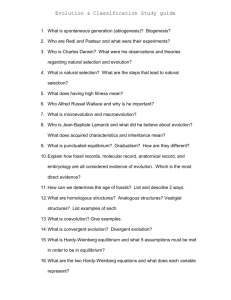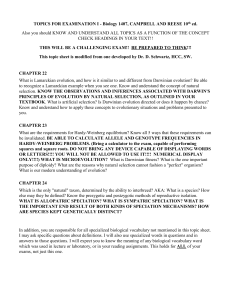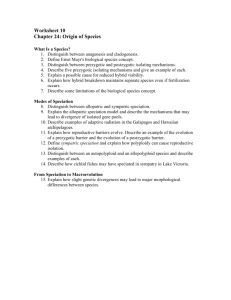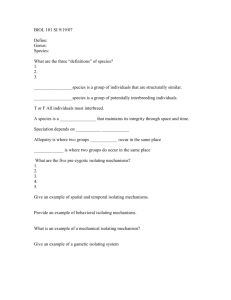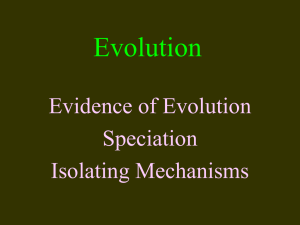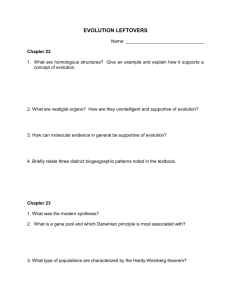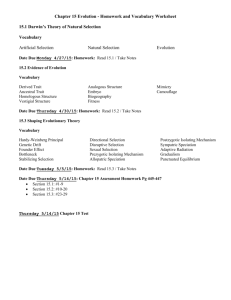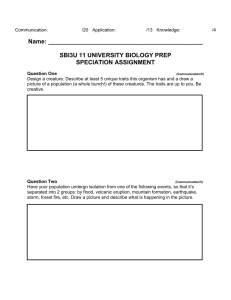Study_Guide_2023
advertisement
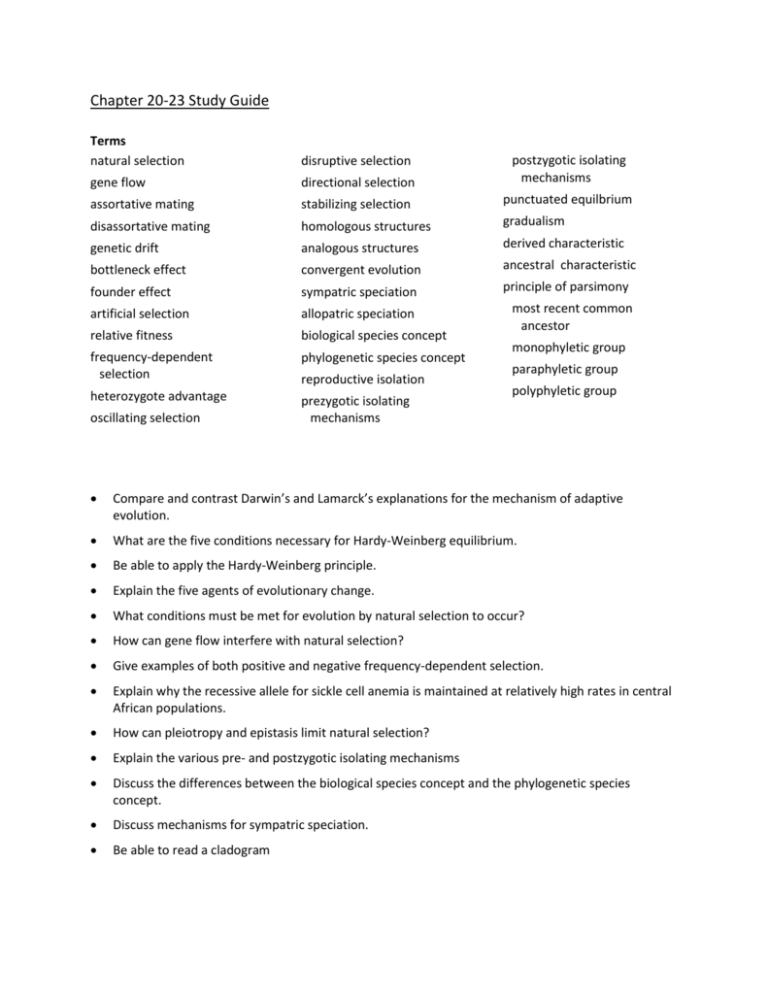
Chapter 20-23 Study Guide Terms natural selection disruptive selection gene flow directional selection postzygotic isolating mechanisms assortative mating stabilizing selection punctuated equilbrium disassortative mating homologous structures gradualism genetic drift analogous structures derived characteristic bottleneck effect convergent evolution ancestral characteristic founder effect sympatric speciation principle of parsimony artificial selection allopatric speciation relative fitness biological species concept most recent common ancestor frequency-dependent selection phylogenetic species concept heterozygote advantage prezygotic isolating mechanisms oscillating selection reproductive isolation monophyletic group paraphyletic group polyphyletic group Compare and contrast Darwin’s and Lamarck’s explanations for the mechanism of adaptive evolution. What are the five conditions necessary for Hardy-Weinberg equilibrium. Be able to apply the Hardy-Weinberg principle. Explain the five agents of evolutionary change. What conditions must be met for evolution by natural selection to occur? How can gene flow interfere with natural selection? Give examples of both positive and negative frequency-dependent selection. Explain why the recessive allele for sickle cell anemia is maintained at relatively high rates in central African populations. How can pleiotropy and epistasis limit natural selection? Explain the various pre- and postzygotic isolating mechanisms Discuss the differences between the biological species concept and the phylogenetic species concept. Discuss mechanisms for sympatric speciation. Be able to read a cladogram
